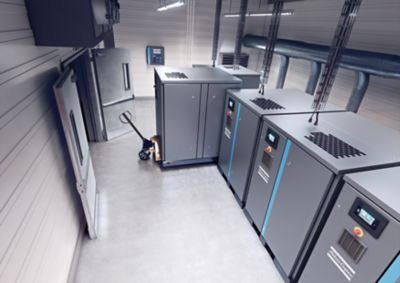Reducing costs and helping the environment
Find out all the great tips in this educational beginner's guide
- Optimising compressed air systems
- How technology can be used to identify compressed air leaks
- Deploying advanced ultrasonic technology
- Health checks and energy audits for compressed air installations
- Common misconceptions around air energy audits and leak detection
- Real-life customer applications
A brief overview of the guide
Improving energy efficiency remains a top priority for most manufacturing organisations – for both financial and environmental reasons.
2. How technology can be used to identify compressed air leaks
It is easy to assume that compressed air systems are running efficiently. But even if leaks are not immediately obvious, it does not mean that they do not exist. Leaks can be caused by many issues including corrosion, poor pipe connections and bad seals. And without investigation, these problems can add up to a significant amount of wasted energy over time, resulting in higher bills.
3. Deploying advanced ultrasonic leak detection technology
A more precise approach is to use ultrasonic leak detection equipment, which operates without interrupting plant production, reaches system areas that are hard to access, and locates all air leaks.
5. Common misconceptions around air energy audits and leak detection
In a typical manufacturing plant with high degrees of automation, plant managers oversee a broad range of inter-linked systems and technologies that must work seamlessly together. In such complex operating environments, it is easy to overlook the importance of high-performing compressed air systems.
Moreover, failure to instigate compressed air health checks and energy audits can also sometimes be based on outdated misconceptions that do not reflect real-world experience. Here we address some of the most common fallacies.
6. Real-life customer applications
Design engineering company Fabricon has also benefited from an iiTrak study of the compressed air usage patterns, revealing the need for a new compressor, with its existing unit relegated to standby duty. Calculations indicated long term savings with a 5-year payback from the upgrade plan.


